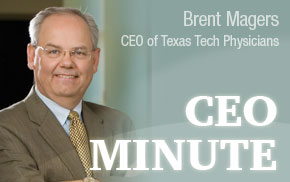 Problem solving identifies the difference between the actual and desired state of
affairs, and takes action to resolve that difference. Along with many others, I think
it is time we solve some big problems in our country regarding health care delivery.
Too many people are uninsured. The current system is in actuality not a system at
all. It is fractured, and above all, too costly. We have become desensitized to annual increase in health
care cost. Yet, I found myself somewhat shocked to read in a report from Milliman,
Inc., an actuarial and health care consulting firm, that the cost to cover a family
of four under an employer health care plan is expected to top $20,000 this year. This
is up more than 7 percent from last year. In 2002, the cost was $9,235.
Problem solving identifies the difference between the actual and desired state of
affairs, and takes action to resolve that difference. Along with many others, I think
it is time we solve some big problems in our country regarding health care delivery.
Too many people are uninsured. The current system is in actuality not a system at
all. It is fractured, and above all, too costly. We have become desensitized to annual increase in health
care cost. Yet, I found myself somewhat shocked to read in a report from Milliman,
Inc., an actuarial and health care consulting firm, that the cost to cover a family
of four under an employer health care plan is expected to top $20,000 this year. This
is up more than 7 percent from last year. In 2002, the cost was $9,235.While employers still cover a majority of health care expenses, employees are paying a larger portion of the total amount every year. Health care, including insurance, medical services, drugs and medical supplies, accounted for 6.6 percent of the household budget in 2010 — the fifth consecutive year of increases. Let us be thankful we work for Texas Tech University Health Sciences Center, an employer with an excellent insurance plan. Still, one has to wonder, what is the affect on American businesses that are carrying this cost burden and could some of that money be used for expanding plants, hiring employees or enhancing wages? And for the individual employee, how much would people spend if they had some extra cash in their pockets? Furthermore, what would that spending do for the economy?
As I write this, the U.S. Supreme Court ponders the fate of the Patient Protection and Affordable Care Act. I am not saying this law is the complete answer. There are pros and cons with the law. However, I think regardless of how the highest court in the land ultimately rules on the matter, we must move forward by:
- Anticipating bundled payments
- Achieving greater transparency in our charges
- Offering more preventive medicine
- Continuing efforts to improve quality (clinical transformation)
- Creating greater access (ultimately allowing patients to make appointments via a secure Web portal)
- Lowering cost
- Transitioning our primary care clinics to medical homes
That is quite a to-do list. I am open minded that others have views, too. I would like to hear from you on any of these thoughts.
